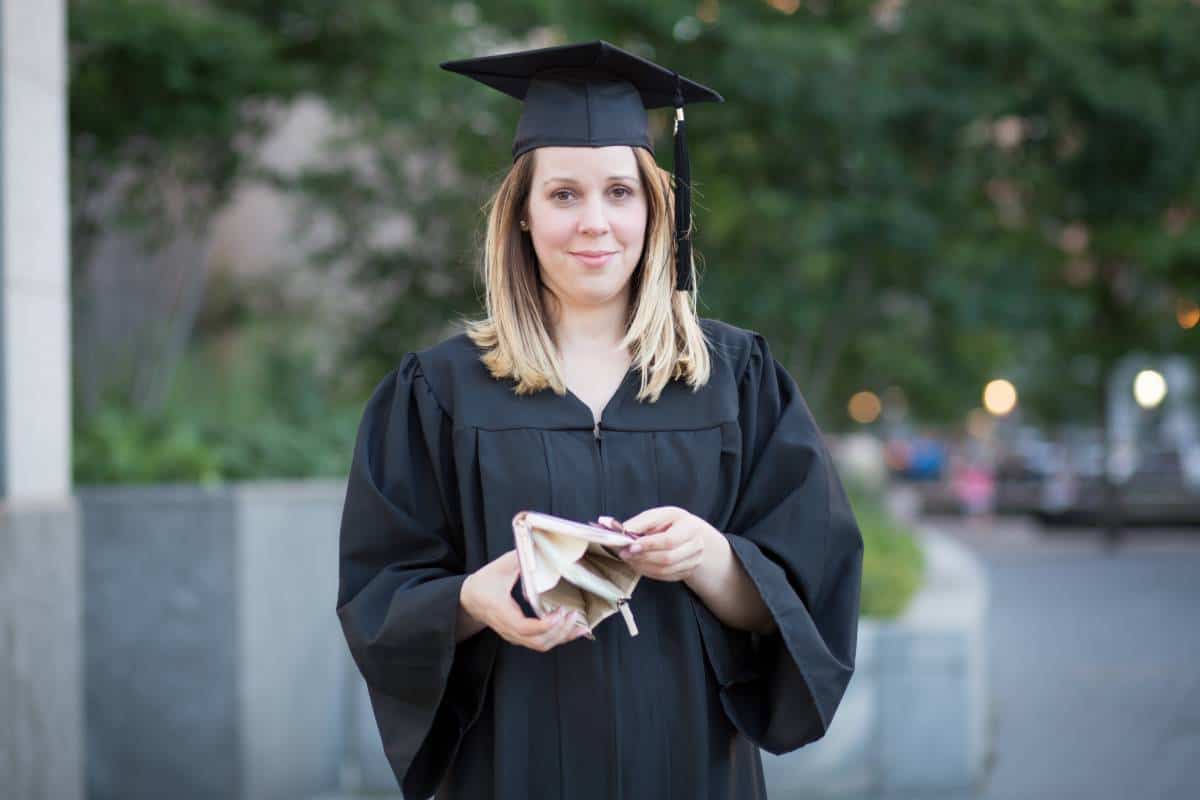Are you dealing with student debt? Students are now balancing student loan payments, remote learning, and working part-time. This can be overwhelming for even the most resolved student. The financial effects of the pandemic, like rising cost of living, inflation, and stagnant wages, are still being felt by many Canadians, including current and recently graduated students. Take some time to review the available support for students and practical tips to keep your student debt to a minimum in 2025 and beyond.
The current landscape
The average post-secondary student in Canada graduates with around $29,000 in student-related debt, according to Statistics Canada (2024). This debt is incurred from the cost of tuition, rent, and food, all of which have risen faster than inflation over the past decade. For many young Canadians, these costs may be a significant barrier to accessing post-secondary school. The only solution is to borrow to fulfill their educational aspirations.
Recent data from Statistics Canada (2024) also shows that about 43 percent of graduates from the class of 2022 financed their postsecondary education with some form of loan. This proportion was highest for bachelor graduates at 51 percent, and lowest for doctoral graduates at around 32 percent. The good news is that interest on federal student loans has been permanently eliminated since 2023. Canada Student Grant amounts also remain higher than pre-pandemic levels. The government also provides student loan repayment assistance.
The total amount of student loan debt in Canada crossed $28 billion in 2024 – this is only counting government-backed loans, not private ones. Almost every second graduate now enters the working world with the burden of student loans. Thankfully, there is some reprieve through grants, scholarships, and low-cost loans. These can help manage the cost of student life and keep debt levels down after graduation.
Support for students in need
The Canada Summer Jobs Program
To encourage employers to hire younger workers, the Canada Summer Jobs Program offers wage subsidies to:
- Employers in the public sector
- Non-profit organizations
- Private organizations with 50 or fewer full-time employees
The idea is to create a quality summer work experience for younger folks. Beginning in 2019, the program goes beyond students exclusively to anyone between the ages of 15 and 30 who may be eligible to participate.
Canada student grant for full-time students
For the 2025–2026 academic year, eligible full-time undergraduate students with financial need can receive up to $4,200 per year, or $525 per month of study. All eligible students are automatically assessed for this grant when they apply for student aid. The amount you receive will depend on your family income and size. The grant is not available in Quebec, Nunavut, or the Northwest Territories, since these regions have their own programs.
Other federal grants
- Canada Student Grant for Part-Time Students: Up to $2,520 per academic year.
- Canada Student Grant for Students with Disabilities: Up to $2,800 per academic year.
- Canada Student Grant for Full-Time Students with Dependants: Up to $280 per dependant, per month.
Ways to find the cash for post-secondary school
Free cash
There are a number of websites where you can check out scholarships, bursaries and grants available to students. Scholarships Canada is a one-stop shop for students looking for free cash. The organization claims they have helped distribute thousands of awards and scholarships worth almost $200 million. In the featured scholarships section on their website’s front page, they have ones worth $250, going up to $5,000. There are now more scholarships specifically for underrepresented groups, including Indigenous students, students with disabilities, and international students. Some of the tips they offer to win these scholarships include:
- Carefully and thoroughly read the application, including the small print.
- Make sure you qualify for the scholarship: double-check the eligibility criteria.
- Know the deadline and make a note of it in your calendar.
- Find out if you need transcripts: originals or copies?
- Answer all questions.
- Request your reference letters as soon as possible and provide ample notice.
- Have a minimum of one reference from outside of school.
- Have at least one person proofread your application.
- Keep a copy of the completed application and a note regarding any supporting documents that you submitted with it.
- Is your application assembled appropriately? Make sure you have followed their guidelines.
- Send the application in time for the deadline.
Other sites that help connect students to scholarships and grants are universitystudy.ca and canada.ca. Also, check at your university or college’s campus offices and the student unions.
Low-cost loans
Financial aid is available to students who need money to pay their tuition and living costs. The cheapest option is to apply for a government loan. Over 1.7 million Canadians currently have a student loan. According to ……. projections show an estimated 661,000 students to receive government loans for the 2025-26 academic year. Government loans for full and part-time students are administered through your province or territory. You can apply for loans at both the provincial/territorial level and the federal level, all in one application. You can also apply for government grants at this time. About 30% of students also use private loans or lines of credit. They have higher interest rates and less flexibility about repayment.
As of April 2023, all federal student loans are interest-free. Some provinces have also eliminated interest on their portion of the student loans, but this varies regionally. Check with your local student aid office. For government loans, there is a 6-month non-repayment period before you have to start making payments. This applies after you finish school, reduce your hours from full-time to part-time, or leave school for any reason. After this period, you must start making payments. You can customize your payment terms through the National Student Loans Service Centre (NSLSC). Graduates have the option to increase or decrease their monthly payment amount through their NSLSC account. The average time to pay back student loan debt in Canada is 10 years, but there are ways to pay off your student debt quicker.
Manage money better
Student debt continues to rise in Canada. Fortunately, there are proactive solutions for students who don’t want to graduate with too much debt. Adjusting your lifestyle as a student will go a long way. This includes:
- Budgeting your spending, setting limits, and allocating a certain amount of money for entertainment spending.
- Living with roommates or sharing a house with other students. As of 2025, the average student in a major city can save over $5000 annually by sharing their space.
- Use public transit (often discounted for students) or a bike to get around. Walking whenever possible to your destination rather than taking a UBER or a taxi.
- Work during the summer months, preferably in a job that will help build your experience.
- Use on-campus resources like food banks, career centres, job fairs, and free events.
All of the above can help you make and save some cash, and get you job-ready for when you graduate.
Build your financial literacy
Almost every university and college offers students personal finance courses, workshops or online modules. Some may be part of the curriculum, others may include seminars offered throughout the year. Some even offer for-credit courses in financial literacy. Whenever available, attend free classes to help increase your financial literacy. Start learning how to spend better and save more. These are important lessons that will not only help you save money as a student but also set you up for financial success when you graduate. Here are some resources from the government of Canada:
- Financial literacy tools and materials
- Financial basics workshop and videos
- Canadian Financial Literacy Database
Student debt is a growing problem in Canada. Over half of Canadian graduates leave school with debt. With more Canadians taking longer to pay it off than ever before. This is likely due to the rising cost of living and stagnating entry-level wages. With some careful planning, you can graduate with minimal loans and a better handle on your finances. If you’re dealing with debt and need assistance with planning for a debt-free future, get a free estimate today.










